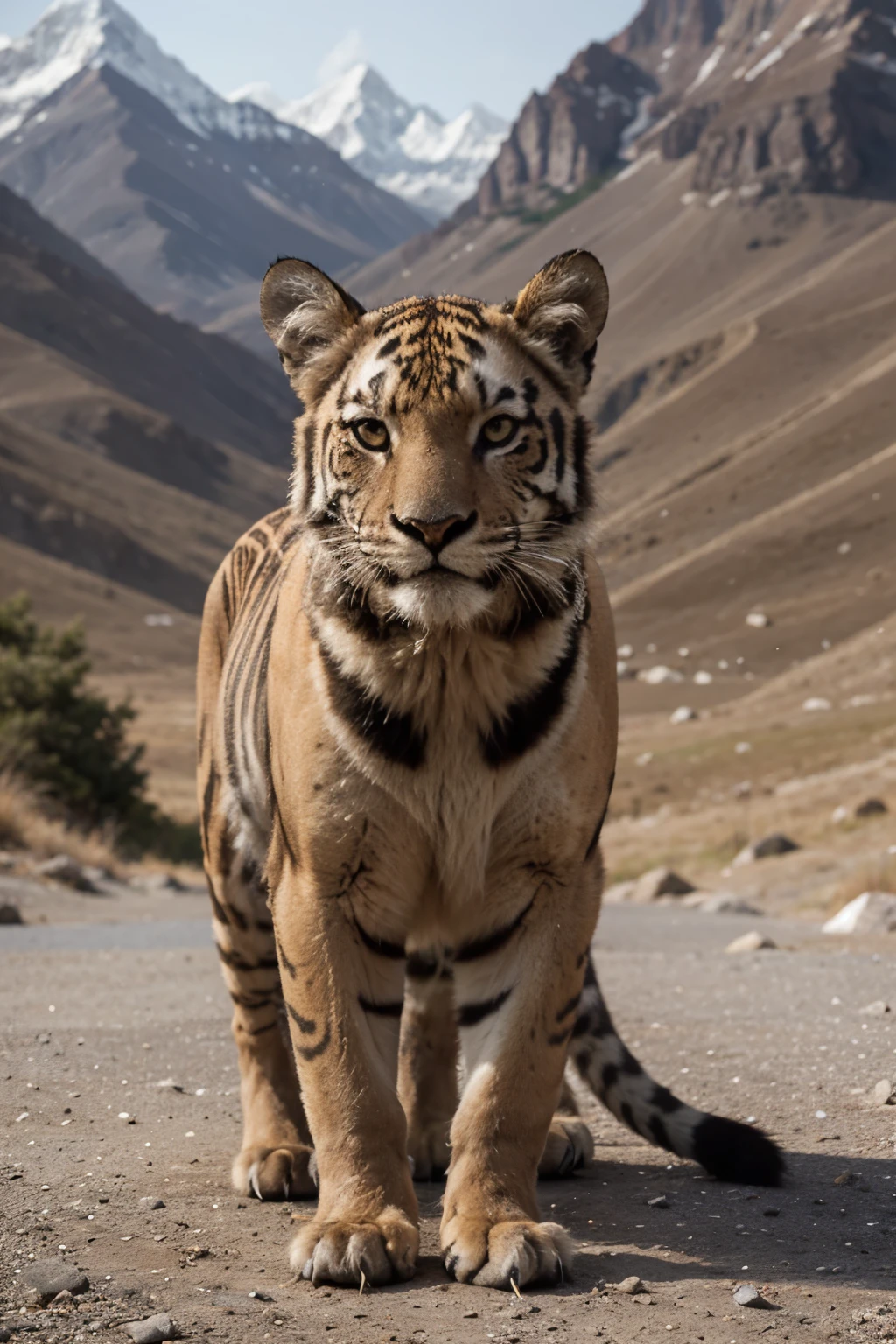There is a tiger walking on a dirt road in the mountains


ฉันมีเรื่องราวที่ซ่อนไว้ อยากฟังไหม?
Panthera blytheae, also known as the "Himalayan Panthera," is an ancient species of large cat found in the Himalayan mountains. Although this species is known from only a single fossilized skull found in Tibet, we can describe some of its physical attributes based on fossil research and knowledge of modern big cats: Size: It is estimated that Panthera blytheae was larger than modern big cat species such as lions or tigers. The fossilized skull suggests that this species may have had a large and heavy body. Bone Structure: Based on the fossilized skull, Panthera blytheae is believed to have had a strong and robust bone structure, indicating that it may have possessed great physical strength. Teeth and Jaws: Panthera blytheae is believed to have had large teeth suited for preying on large animals in the Himalayan environment. These teeth may have been larger and stronger than those of modern big cat species to tackle the animals living in mountain habitats. Fur: Although there is no direct information about the fur of Panthera blytheae, it can be assumed that this species had thick fur, possibly dark in color, as an adaptation to the cold climate of the Himalayan mountains. Ecology: Panthera blytheae is believed to have lived in cold mountain habitats and may have adapted to harsh environmental conditions. They may have preyed on large animals such as wild horses or deer that also inhabited the region. While this description is based on limited available information, the physical attributes of Panthera blytheae provide insight into how this species may have adapted to the unique environment of the Himalayan mountains.
คำพรอมต์
คัดลอกคำพรอมต์
Panthera blytheae, also known as the "Himalayan Panthera," is an ancient species of large cat found in the Himalayan mountains. Although this species is known from only a single fossilized skull found in Tibet, we can describe some of its physical attributes based on fossil research and knowledge of modern big cats:
Size:
It is estimated that Panthera blytheae was larger than modern big cat species such as lions or tigers. The fossilized skull suggests that this species may have had a large and heavy body.
Bone Structure:
Based on the fossilized skull, Panthera blytheae is believed to have had a strong and robust bone structure, indicating that it may have possessed great physical strength.
Teeth and Jaws:
Panthera blytheae is believed to have had large teeth suited for preying on large animals in the Himalayan environment. These teeth may have been larger and stronger than those of modern big cat species to tackle the animals living in mountain habitats.
Fur:
Although there is no direct information about the fur of Panthera blytheae, it can be assumed that this species had thick fur, possibly dark in color, as an adaptation to the cold climate of the Himalayan mountains.
Ecology:
Panthera blytheae is believed to have lived in cold mountain habitats and may have adapted to harsh environmental conditions. They may have preyed on large animals such as wild horses or deer that also inhabited the region.
While this description is based on limited available information, the physical attributes of Panthera blytheae provide insight into how this species may have adapted to the unique environment of the Himalayan mountains.
0 ความคิดเห็น
0
3
0








